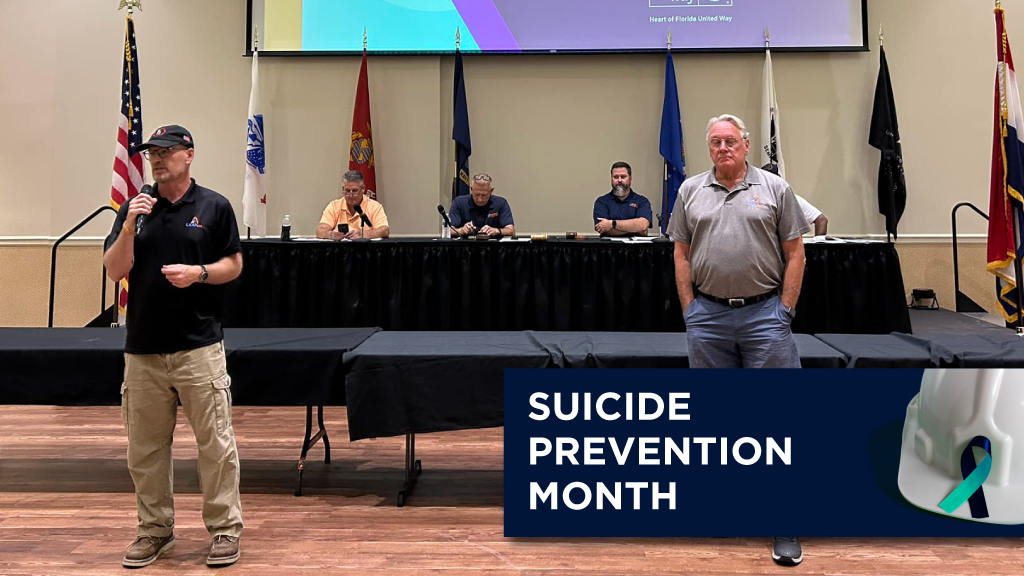ConstructConnect’s Daily Commercial News explores two peer suicide prevention initiatives based in St. Louis as part of our reporting on National Suicide Prevention Awareness Month in the U.S. this September.
The construction sector and its allies have come a long way in devising strategies to combat suicides in the sector.
But it’s telling, says one researcher based in St. Louis, that there are still statistics that shock even advocates.
Dr. Brad Evanoff, a professor in occupational health and safety at the Washington University School of Medicine in St. Louis, recently offered an anecdote about a Center for Construction Research and Training convention he attended last summer. The delegates were no doubt all familiar with data reporting that construction workers have nearly twice the rate of substance abuse as the national average, and the rate of suicide for men working in construction is about four times higher than that of the general population.
But advocates seem less aware that there are five times more deaths in construction from suicide than from workplace fatalities, a statistic that still “blows my mind,” said Evanoff.
The discussion at the convention ventured into how health and safety resources should be directed towards the mental health and addictions issue.
“I raised my hand and said, ‘Well, since there are five times more fatalities from suicide than from safety, you take our current safety budgets and multiply by five.’”
It was a “rhetorical flourish” that got his colleagues’ attention, Evanoff said.
The Sackler legacy
Advocates identify the addictions path in recent times as marked by the explosion in opioid use across America associated with the Sackler family, whose Purdue Pharma created a pipeline for legal opioid use that construction workers, often wracked with pain, jumped aboard; the rapid growth in opioids as unregulated street drugs; and the spike in mental health problems including depression and suicides stemming from the pandemic along with the rise of much stronger drugs, often impure, such as fentanyl.
Evanoff, the academic, and Don Willey, retired labourer and former-LIUNA business manager based in St. Louis, are involved in addressing the addiction/suicide issue in construction from seemingly different ends of the spectrum.
But it’s clear the solutions they are working on are integrally linked.
Willey, now the chair of the Laborers’ pension fund for the local in St. Louis, supports LEAN STL (Laborers Escaping Addiction Now – St. Louis), a new labourers’ peer support program that recently hired two support workers with long histories not only of construction work but of addictions and mental health problems. LEAN got its start in Massachusetts, where the focus was on addictions only, while LEAN STL links addiction, mental health and suicide.
“They’re all interrelated,” said Willey. “You know, it takes people 10 years before they seek professional help and dealing with mental health issues, depression, anxiety, schizophrenia, whatever. And oftentimes, in those 10 years they are self-medicating with pharmaceutical drugs, street drugs, alcohol, all the above. So we decided, we need to find these two peer support specialists.”
Since they were hired the two peer support workers have undergone extensive training to help LIUNA members through those tough times. There are broad options for treatment programs but even when workers emerge after treatment, the chances they will relapse are huge, Willey said.
“Their job is to support them, to start the rehab, their sobriety, get them in, monitor them while they’re in and monitor them while they get out,” he remarked. “And get them back on the jobsite, because the most dangerous part is somebody coming out of a 30-day, 90-day stay, somebody coming out of prison, those first two weeks to two months are extremely deadly.”
MATES Down Under
Evanoff, meanwhile, is a driving force behind the MATES program, another new peer-support initiative underway in St. Louis that was imported and modified from Australia. MATES has been in existence almost a decade there, with ample research for North Americans to study. Tarleton Construction is host of the pilot.
Long-time Missouri Carpenters’ Union health and safety advocate Dr. John Gaal described the LEAN program as centralized, because it involves two support workers reaching out to thousands of LIUNA workers at numerous sites – that’s a lot of “belly buttons” to monitor, he said.
MATES, in contrast, is decentralized, Gaal said. It features a system of field officers supporting numerous workplace volunteers. Networks are created with peers supporting each other on various worksites.
The MATES program is in the fledgling stage in St. Louis and Evanoff said much more funding is needed to produce good results.
Nationally, he said, there has been progress in the past half-decade on mental health supports, with a large group of contractors who are believers and a number of national unions who are also supporters, and it’s now on the radar of national health agencies such as NIOSH and OSHA.
“It’s starting to get there, but we’re not quite there in terms of funders wanting to fund this for research,” he said.
“Considering where we were five years ago, this has actually been a pretty fast turnaround in attitudes. I think we’re moving in the right direction. We still have a ways to go to hit a tipping point.”
Gaal advocates for both the LEAN and the MATES programs and says there is room for improvements with both.
Overall, Gaal added, “Unfortunately, despite all the money and time and resources we’re pouring into both opioids awareness and suicide prevention, the numbers are creeping up.
“But I would say we’re a hell of a lot further today, in 2023, than we were in 2016.”
Follow the author on Twitter @DonWall_DCN.



Recent Comments
comments for this post are closed